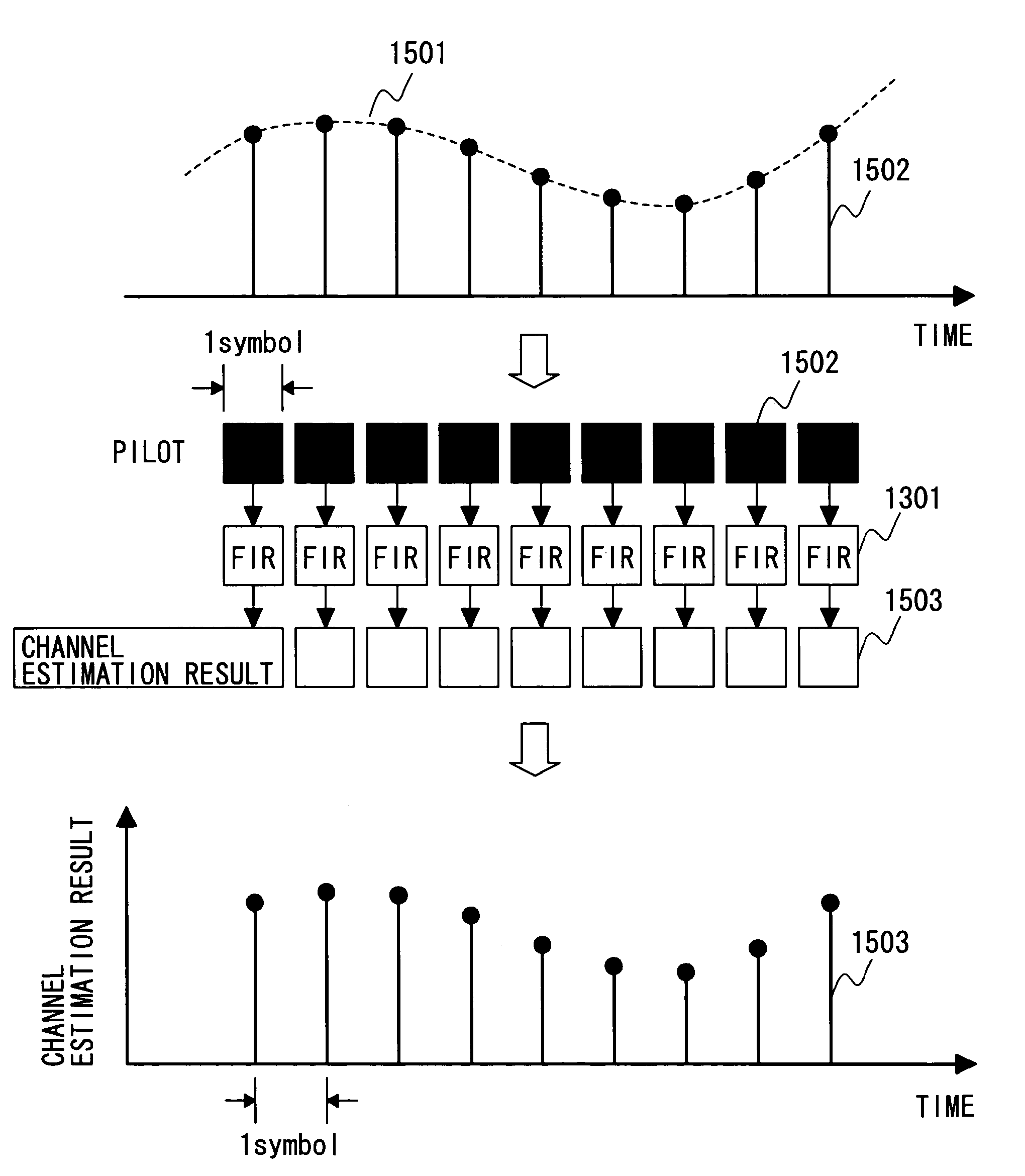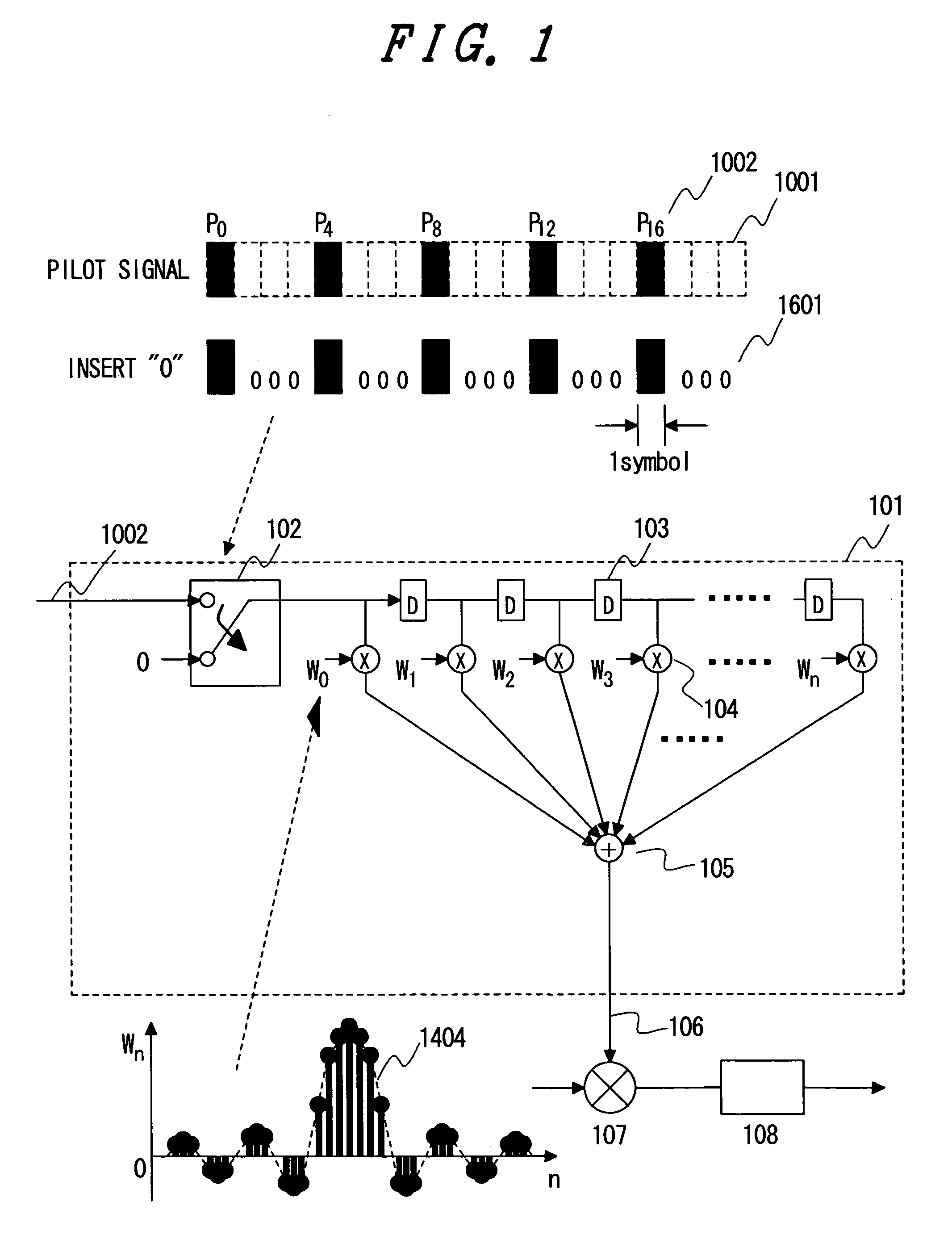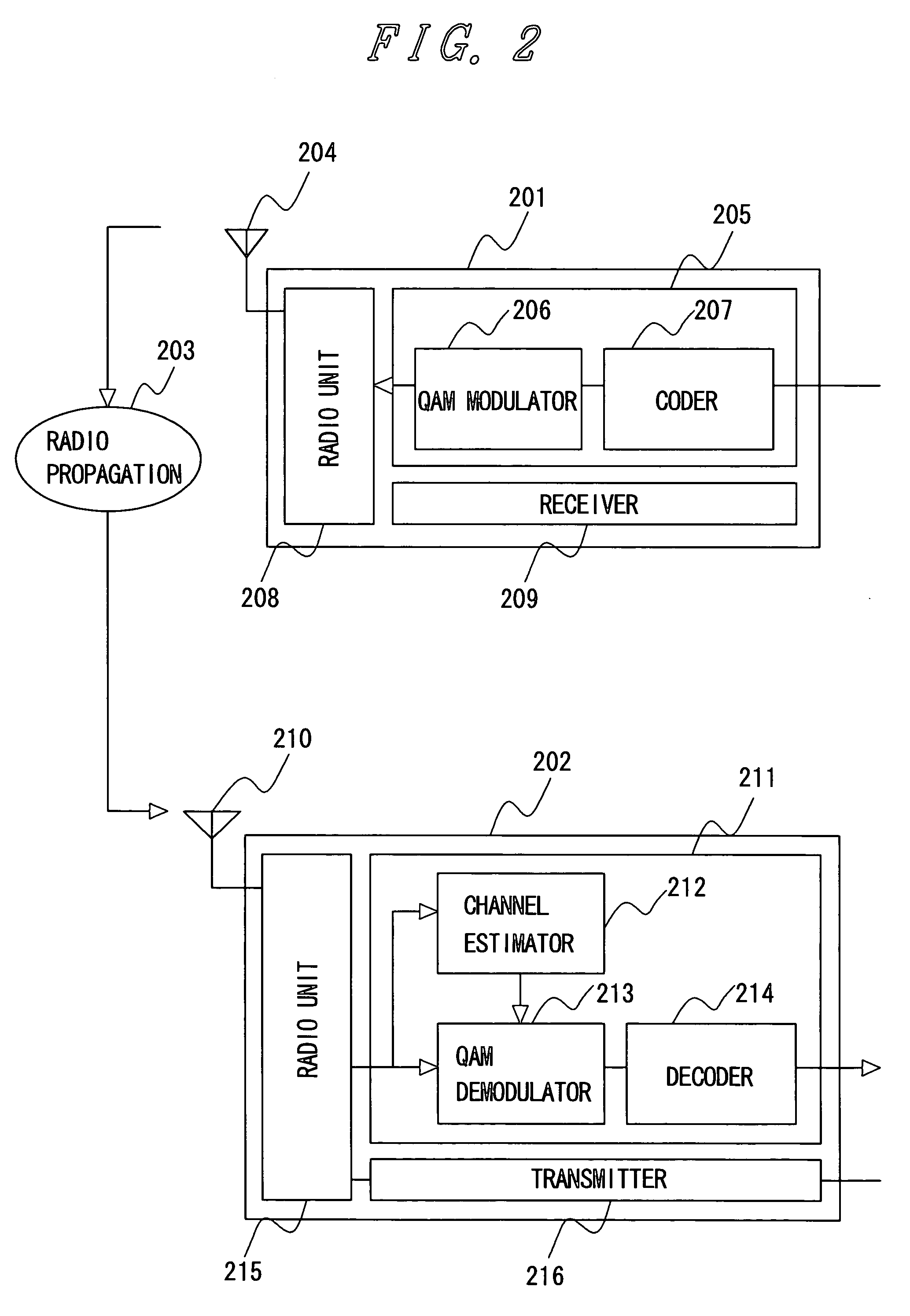Channel estimation method for a mobile communication system
a mobile communication system and channel estimation technology, applied in the field of ideal channel estimation method for a communication apparatus, can solve the problems of significant deterioration of communication quality, so as to enhance the accuracy of channel estimation result calculation, improve characteristics, and eliminate thermal noise
- Summary
- Abstract
- Description
- Claims
- Application Information
AI Technical Summary
Benefits of technology
Problems solved by technology
Method used
Image
Examples
first embodiment
[0036]To achieve the object described above, the present invention uses a pilot signal sampling frequency that is equivalent to the data signal transmission rate (symbol rate), and uses a single pilot signal or a plurality of weighted pilot signals to achieve channel estimation for each data signal symbol. More specifically, the present invention estimates the data signal's amplitude variation or phase rotation during propagation.
[0037]Pilot signals (P0, P1, P2, P3, P4, . . . ) 1001 are transmitted or sampled at the same transmission rate (symbol rate) as for data signals 1005. In FIG. 10, the pilot signals P0, P4, P8, P12, and P16 (1002), which picked up at 4-symbol intervals, are multiplied by weighting coefficients (1003) and added together (1004) to calculate the channel estimation result for a certain symbol d1 (1006) within the data signals 1005. An alternative is to use only pilot signal P8, which is received at the same or closest time, for calculating the channel estimation...
second embodiment
[0039]In a second embodiment, a received pilot signal is used as an input and allowed to pass through a low-pass filter (LPF) for the purpose of enhancing the channel estimation accuracy. The second embodiment will now be described in detail.
[0040]In a radio propagation path, fading occurs in which the amplitude and phase drastically change (a sort of noise). When this phenomenon is expressed in terms of a frequency region, no frequency components exceed the maximum Doppler frequency (=fd). The maximum Doppler frequency is proportional to the carrier wave frequency and mobile station's moving speed. If, for instance, the carrier wave frequency is 2 GHz and the mobile station's movement speed is 120 km / h, the maximum Doppler frequency (fd) is substantially equal to 240 Hz (equivalent to 240 bps) so that the substantial spectral density is as indicated by 1101 in FIG. 11.
[0041]Meanwhile, the data transmission rate of, for instance, the third-generation cellular phone is 384 kbps. The ...
third embodiment
[0043]The description of a third embodiment relates to the configuration of a low-pass filter that is used in the second embodiment. For calculating the channel estimation result, which varies from one data signal symbol to another as mentioned in the description of the first embodiment, the pilot signal transmission or sampling intervals are the same as those for the data signal. In the first embodiment, pilot signals at a plurality of times are weighted and added together. However, the simplest method for achieving this object is the use of an FIR filter 1301 shown in FIG. 13. The FIR filter comprises a plurality of delay devices 1303, multipliers 1304 for multiplying weighting coefficients for respective data, and an adder 1305 for adding up the obtained multiplication results. As shown in FIG. 14, various FIR filter coefficients are set as weighting coefficients in accordance with an impulse response 1402, which is determined by a Fourier transform of desired low-pass characteri...
PUM
 Login to View More
Login to View More Abstract
Description
Claims
Application Information
 Login to View More
Login to View More - R&D
- Intellectual Property
- Life Sciences
- Materials
- Tech Scout
- Unparalleled Data Quality
- Higher Quality Content
- 60% Fewer Hallucinations
Browse by: Latest US Patents, China's latest patents, Technical Efficacy Thesaurus, Application Domain, Technology Topic, Popular Technical Reports.
© 2025 PatSnap. All rights reserved.Legal|Privacy policy|Modern Slavery Act Transparency Statement|Sitemap|About US| Contact US: help@patsnap.com



